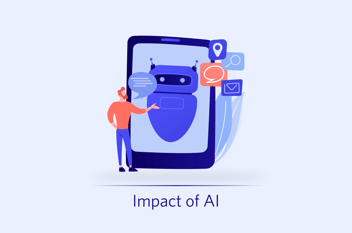In the rapidly evolving field of AI, prompt engineering has emerged as a game-changing technique, revolutionizing the way AI models are trained. Instead of traditional coding, engineers now rely on crafting natural language prompts to fine-tune AI models for greater accuracy and human-like outputs. In this blog, we'll explore the concept of prompt engineering, its significance, and how it empowers AI to reach new heights.
What is Prompt Engineering?
Prompt engineering involves creating prompts using natural language, rather than conventional coding, to fine-tune the models for improved accuracy and relevance of their outputs. Prompt engineering comprises defining the task, curating a dataset, designing the prompt, refining the model, and conducting thorough testing. This technique plays a vital role in optimizing AI model performance, enabling them to better understand complex tasks. By leveraging prompt engineering, AI models can generate outputs that align with human requirements and objectives, driving advancements in AI technology.
The Importance of Prompt Engineering:
Prompt engineering holds immense importance as it enables AI models to produce accurate and relevant outputs. By crafting specific prompts, engineers provide the necessary information and context for AI models to understand the task at hand, resulting in more useful responses. Without prompt engineering, AI models may generate irrelevant or inaccurate outputs, limiting their effectiveness.
How Prompt Engineering Works:
Prompt engineering follows a systematic process, encompassing several key steps:
Defining the task: Clearly defining the task that the AI model will perform, such as language translation, image recognition, chatbot responses, or content creation.
Creating the dataset: Curating a dataset that includes examples of input and output for the task. This dataset is used to train the AI model.
Designing the prompt: Designing a prompt that is both precise and comprehensive, providing the AI model with the necessary information to generate accurate responses.
Fine-tuning the model: Training the AI model using the dataset and prompt, adjusting the neural network's weights and biases until the desired output is achieved.
Testing and refining: Thoroughly testing the model to ensure it produces accurate and relevant outputs. If necessary, refine the prompt and fine-tune the model again for better results.
Examples of Prompt Engineering:
Language Translation: Crafting prompts in the source language to facilitate accurate translation into the target language. For example, a prompt for translating "I am going to the store" into Spanish might be "Translate the sentence 'I am going to the store' into Spanish, using informal language."
Image Recognition: Creating prompts that provide relevant information about objects or features in an image. For example, a prompt for identifying a dog in an image might be "Identify the breed of the dog in this image, which is standing on a grassy field."
Chatbots: Developing prompts that help AI models understand user intent and generate appropriate responses. For instance, a prompt for a customer service chatbot might be "Generate a response to this user's complaint about a delayed delivery of their order."
Content Creation: Designing prompts that provide specific guidelines for generating desired content. For instance, a prompt for an AI-generated article might be "Write an informative article about the benefits of a plant-based diet, with a focus on reducing carbon emissions and improving health outcomes."
The Future of Prompt Engineering:
While prompt engineering is currently in high demand, its long-term significance remains uncertain. Some experts speculate that it may be a short-term trend that diminishes with each generation of AI. Alternatively, another possibility is that prompt engineering becomes widespread, with knowledge workers leveraging it to customize no-code AI models for specific tasks.
Conclusion:
Prompt engineering stands as a critical technique in the world of AI, allowing models to generate more accurate and relevant outputs. By creating precise and comprehensive prompts, engineers empower AI models to better understand the task at hand and generate responses that are more useful to humans. As AI continues to advance, prompt engineering will play an increasingly important role in creating more intelligent.




